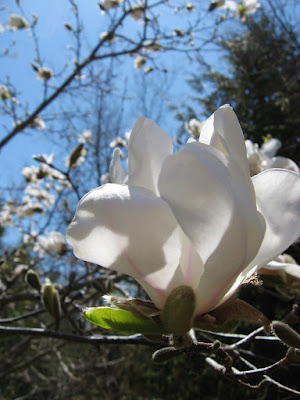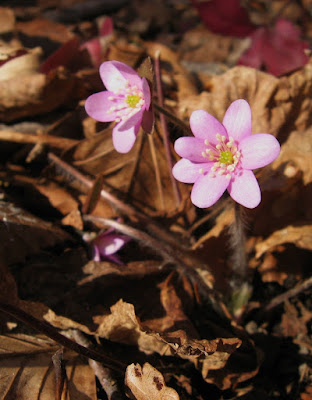When you finally sort through unpacked boxes, it's amazing what you find, for example, this pair of side gusset or "Congress gaiters" boots:



Half-boots (ankle boots) were popular for men from the 1830s right up to the Depression in the 1930s. Most were made of leather, though softer materials were popular for informal wear.By the mid 1800s they had become the most common form of footwear for both sexes in all social classes.
In 1837 Queen Victoria was presented with a pair of dainty 'elastic' sided boots, the first to be invented, made by an Englishman, Joseph Sparkes Hall.
The difficulties of fastening a boot with buttons and laces led London shoemaker Joseph Sparkes Hall to experiment with fastenings and the elastic-sided boot resulted. The elasticated side gussets eliminated the need for laces or button fastenings. Instead, the boots could simply be pulled on with the help of the fabric loops positioned at the ankle.
The gusset for early elastic-sided boots is made of tightly coiled wire covered in cotton. By 1840 coiled wire was replaced by rubber. By 1850 techniques for making the elastic gussets had much improved, though the elastic tended to perish after a number of years. It was not until the early 20th century that techniques for using elastic in clothing, underwear and footwear were perfected.
Improvements in his design led Sparkes Hall to describe the elastic-sided boot as 'the most perfect thing of its kind'. Sparkes Hall patented the design on 14 May 1840, the first registered design to feature elastic. In 'The Book of the Feet' written in 1846, Sparkes Hall claims the Queen was well satisfied with the design, noting that 'Her majesty has been pleased to honour the invention with the most marked and continued patronage: it has been my privilege for some years to make her boots…and no one who is acquainted with her Majesty's habits of walking and exercise, in the open air, can doubt the superior claims of elastic over every other kind of boots'.
The influence of Queen Victoria in the area of fashion is noteworthy. Styles worn by the Queen, such as the above boots, the white wedding dress and riding habit, were quick to become popular, spreading throughout England and the Americas. The elastic sided boots soon became the most popular form of footwear, worn by both men and women.
By the 1850s most boots were mass produced. Some, however, were still partly made at home. Women often embroidered the uppers of boots and slippers for their families as well as for themselves. Patterns for these were readily available, but the results were sometimes gaudy as some of the colours favoured for the embroidery were produced by bright chemical dyes.

Side gusset boots are still in production - good design is timeless.

As for my "found" pair of boots - they are a heavy duty pair, with thick soles and stout leather uppers. They have a B.F. Goodrich sole and while well worn, are still in remarkably good condition with the elastic still having stretch. I would date them to approximately 1915-1930, probably owned by a working class man, they certainly aren't high fashion, but very serviceable.
I've listed these at Just Too Much , I hope they find a new home with someone who respects the elusive clothing worn by the everyday person.

























 It’s from the leaves that both the scientific name, Hepatica, and the common name, liver-leaf, originated. The leaves are lobed and typically become a deep burgundy color as they age, attributes that reminded people of the shape and color of a liver.
It’s from the leaves that both the scientific name, Hepatica, and the common name, liver-leaf, originated. The leaves are lobed and typically become a deep burgundy color as they age, attributes that reminded people of the shape and color of a liver.









 Next an original oil form
Next an original oil form  Wearable art, a hand painted silk crepe scarf - can't you almost see the wind blow? This piece is available from
Wearable art, a hand painted silk crepe scarf - can't you almost see the wind blow? This piece is available from  "Sapphire Sky with Birch Forest", a lovely print of an original pen and ink illustration created by
"Sapphire Sky with Birch Forest", a lovely print of an original pen and ink illustration created by 

 Just as blue skies need at least a view clouds to give some contrast, all of these artists have added contrast in a variety of techniques to complement their beautiful work - please check out their shops to see more!
Just as blue skies need at least a view clouds to give some contrast, all of these artists have added contrast in a variety of techniques to complement their beautiful work - please check out their shops to see more!







